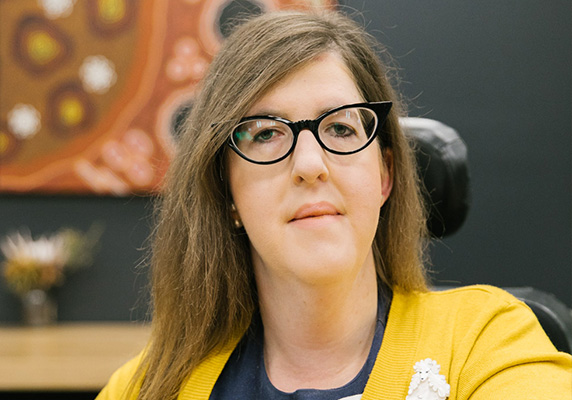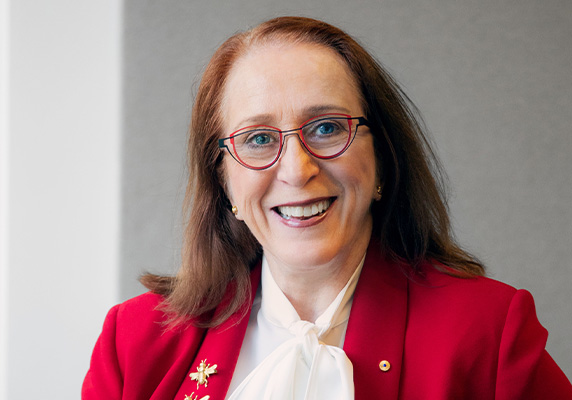Disability advocates want to see the Disability Discrimination Act – now more than 30 years old – brought into line with modern thinking about disability.
More than four million Australians live with a disability. Their rights are protected by a variety of laws, some international – like the United Nations Convention on the Rights of Persons with Disability (UNCRPD) – and some national, like the Disability Discrimination Act (Cth) (DDA).
But despite the existence of these laws, people with disability continue to experience segregation, barriers and discrimination. The Royal Commission into Violence, Abuse, Neglect and Exploitation of People with Disability (also referred to as the Disability Royal Commission) has shone a spotlight on many of these terrible experiences.
Ahead of the release of the final report of the Royal Commission, peak disability advocacy body People With Disability Australia (PWDA) has called for an end to the segregation experienced by people with disability every day. This segregation is experienced in everyday settings, including in education, work and housing.
“Our segregation is perpetuated by Australia’s laws, policies and frameworks. For too long we’ve been sidelined, and our human rights have been violated; a radical overhaul is needed,” says Nicole Lee, president of PWDA.
“This segregation is not just a form of discrimination; it is a breeding ground for the violence, abuse, neglect and exploitation inflicted on us as disabled people.”
Lee says people with disability need to see action come out of the Royal Commission, and ending segregation would address the drivers of the violence, abuse and neglect of people with disability experience.
ending segregation would address the drivers of the violence, abuse and neglect of people with disability experience
PWDA also highlighted the need for change to ensure Australia complies with international commitments and meets human rights obligations.
“The UN Convention on the Rights of Persons with Disabilities is clear: our human rights cannot be limited or denied, and segregation cannot be justified based on impairment, diagnosis, or disability. We have a lot of work ahead of us to ensure we have the same freedoms and rights as people without disability in Australia,” Lee says.
“Our right to participate in all aspects of Australian life must become a reality. Overhauling housing, education and employment systems so they are genuinely inclusive – which means desegregated and accessible – must be a priority.”
Calls for change from the legal sector
Natalie Wade, Founder and Principal Lawyer at Equality Lawyers, is another disability advocate who wants to see the modernisation of the legal framework applicable to Australians with disability.
Wade, who has lived experience of disability, describes herself as being part of a movement seeking change.
“I have a position that the DDA should be modernised and should be reformed … I am one of many disability rights lawyers who is calling for a modernisation of the Act. It hasn’t been subject to significant reforms since it was brought before the Parliament in 1992,” she explains.

The Act is not currently up for review, and the timing of any review would be determined by the Attorney General. Certainly, Wade acknowledges, the disability community in Australia is facing change at the moment: as well as the Disability Royal Commission being finalised, the NDIS is undergoing a major review, having just notched up ten years of existence.
Wade is hopeful that the Disability Royal Commission’s final report will make recommendations about what form modernisation of the DDA could take, and that this will spur the Attorney General to act.
“I think what the Royal Commission comes out with will definitely inform some of the prospects of success of being able to see the current government reform the DDA. I think that there is a clear appetite by the current government to reconsider and possibly redesign social law and policy to better fit the modern era,” she says.
“What we really need to do is ensure that the issue of the reform of the DDA is taken up by the Attorney General and that proper co-design and consultation is delivered with the disability community, to ensure that they inform what the future DDA should look like.”
Modernisation and the social model
Co-design will be vital, but in the meantime, Wade has her own views on what a modernisation of the DDA could look like.
“We really are referring to bringing [the Act] into … our current thinking around disability rights and capturing the social model of disability in a clearer way, but also ensuring that the Act reflects how people with disability identify as being disabled, so that they are able to seek protection under the Act when and if they need to,” she explains.
The social model of disability, which underpins the modern disability pride and rights movement, suggests that people are disabled by the barriers they face within the community, such as non-accessible buildings. This can be contrasted with the medical model of disability, which instead holds that people are disabled by their impairments. The social model has an empowering view of disabled people, whereas the medical model focuses on deficits and what people with disability ‘can’t’ do.
The social model of disability suggests people are disabled by the barriers they face within the community, such as non-accessible buildings … the medical model of disability holds that people are disabled by their impairments
Transforming the DDA in accordance with the social model would be a massive, but welcome, change, according to advocates like Wade.
Part of this would involve removing all forms of segregation faced by people with disability – think an end to so-called ‘special schools’ and Australian Disability Enterprises, formerly known as sheltered workshops.
Wade says she can see this vision is “significantly moving from what we have ever experienced before,” and acknowledges that many people would struggle with the concept, at least to begin with.
“I think that often when educators and schools hear of creating schools that are not segregated [they] often understandably think ‘you are completely divorced from reality’.
“I absolutely do not know what it is like to be a teacher – but what I do know is that when inclusive education is delivered in the way that it is meant to be, the way it’s meant to be delivered in accordance with international human rights law, then these concerns and challenges would fade significantly,” she says.
Any end to segregation would need to be implemented over time. Importantly, ending segregation doesn’t mean an end to any structure or support. Rather, it means those supports are integrated into the wider community, in accordance with the social model of disability. In terms of the example of inclusive education, Wade says this would mean students with disabilities would have support, resources, funding, interventions and the environment built around them so they can learn alongside their peers and meet their learning goals.
“It’s a redesign of the way that we build schools, the way that we have school environments and the way that we design and deliver the curriculum,” Wade says.
It comes down to creating “those structural and systemic pillars in a way that anticipate[s] the disabled learner”.
And this could be replicated across all segregated environments, including housing and employment, Wade says.
“Public policy where we seek to place disabled people in an environment on the basis of their disability absolutely requires a redesign of the way that we think and build and develop … with the anticipation and expectation that disabled people will be active citizens in those environments,” she adds.
A better way to complain
Another key area of reform for the DDA is the way that the complaints mechanism within it works.
Wade says this reform would be complex, due to the interplay between the Australian Human Rights Commission Act (Cth), Federal Court rules and the DDA. But without reform, she says, people with disability seeking redress for any wrongs they face will continue to have a negative experience.
Among the necessary changes, Wade says, the complaints mechanism needs to be made more accessible, more inclusive and more affordable. Part of the problem is that negative attitudes towards disability are built into the structures and frameworks that apply to people, resulting in the kinds of discriminatory practice that the Royal Commission has uncovered.
“Society has been built to marginalise a number of different groups: people who are gender diverse, race, age, disability and so on,” Wade explains.
“It’s important that when those barriers are identified that marginalise or exclude people with certain ‘protected attributes’, in the words of discrimination law, then we must advocate for those barriers to be broken down and to be rebuilt … or the system to be rebuilt in a way that is inclusive and accessible for all.”
‘when those barriers are identified that marginalise or exclude people … then we must advocate for those barriers to be broken down and … the system to be rebuilt in a way that is inclusive and accessible for all.’
This is where the social model of disability comes into play within governments and law.
Wade says that the social model needs to be adopted in all levels of power, “so that disabled people are seen to be rights-holders and citizens and not seen to be burdens and things to be cured”.
This will take policy reform, achieved through campaigning led by disabled people, their families and advocates. Lived experience will be key to any reform to the DDA, she stresses, because this allows the reformed Act to adequately reflect what disabled people want.
“It’s important to ensure that we not only as civil society campaign for public policy and law reform, but also that we have decision makers with lived experience,” she says.
This inclusion should extend to all people with lived experience of disability, including those with intellectual disability, who should be afforded the opportunity to be heard in their own right to affect policy and law change, she adds.
The human rights impetus for change
When considering whether Australia is fulfilling its human rights obligations to people with disability, it’s important to remember that Australia has no national human rights act, an issue that Wade says needs “immediate attention” from the government.
The country also needs to take into account its obligations under the UNCRPD, which Wade feels “we are not fulfilling”.
Emeritus Professor Rosalind Croucher, President and Acting Disability Discrimination Commissioner at the Australian Human Rights Commission, says Australia’s obligation under the UNCRPD is “a progressive one” and Australia is “on the road” towards fulfilling that obligation.
“That idea of progressive realisation means we have to be vigilant and really watch the progress and to make sure it is a constant forward movement and not any retrogressive slippage in relation to that compliance,” she explains.
“From our perspective as the national human rights institution, first of all, there are known gaps in the implementation of the CRPD, and further efforts are required to keep that forward momentum in progress. Secondly, there’s a need for continued monitoring and advocacy for the continued realisation. And one of the areas that we recognise, particularly in the legal environment, is the need for greater harmonisation of legal frameworks across the country in relation to the Convention on the Rights of People with Disabilities.”

At the end of 2021, the Commission released a position paper on reform of federal discrimination laws in which it identified a number of paths for improvement, including harmonisation, and the introduction of positive duty. Positive duty already exists in the Sex Discrimination Act, and the Commission advocated for that same approach to apply across all discrimination laws. In the case of the DDA, this would mean there would be “a positive duty to take all reasonable measures to prevent disability discrimination,” Croucher explains.
“It’s more than harmonisation; it’s a whole paradigm shift that we’re advocating for,” she says.
The NDIS Review and the Disability Royal Commission could play a role in that paradigm shift, placing the focus squarely on the human rights of Australians with disability. Croucher says the NDIS Review has provided the community with “a real chance to take stock” of where Australia is at with regard to disability support.
“The NDIS does advance implementation of the CRPD in significant ways because it places the individual person with disability at the front of considerations of support, so it’s a welcome inquiry to evaluate the areas where the NDIS has not achieved its intended outcomes.”
Similarly, the Disability Royal Commission has played a role in furthering discussion about the human rights of people with disability.
“What the Royal Commission has done has been to take a human rights-based approach throughout the inquiry and that is a huge plus. That really is looking at the dignity of each individual and their sense of their right to equality. And it would be … incredibly welcome if the Royal Commission does make recommendations towards a human rights act for Australia, which the Commission has been advocating for a long time and more actively this year,” she says.
Although Australia doesn’t have a human rights act, Croucher says, the nation has signed on to protect and promote human rights through its role as signatory and ratifier of international instruments like the UNCRPD. This gave birth to the DDA and the role of Disability Commissioner, giving protections to people with disability in public life.
A federal human rights act would hold public servants accountable to taking a human rights-based approach to policy design and decision making. An Act of this type, Croucher says, would “provide that paradigm shift through the public authority, [and] positive duty. It [would] provide an obligation of consultation in policy development and legislative development, including with people with disability… and the accountability piece through the possibility of a cause of action, a right to bring a complaint and the leverage that is given by having the possibility of court action down the road.
“But it’s not about litigation. It’s about that whole mindset change,” Croucher adds.
“The Royal Commission shows the need for the protections … because this involves the lives of so many individuals whose human rights have been reduced.
“The protection for the human rights of people with disability absolutely needs to be strengthened.”




